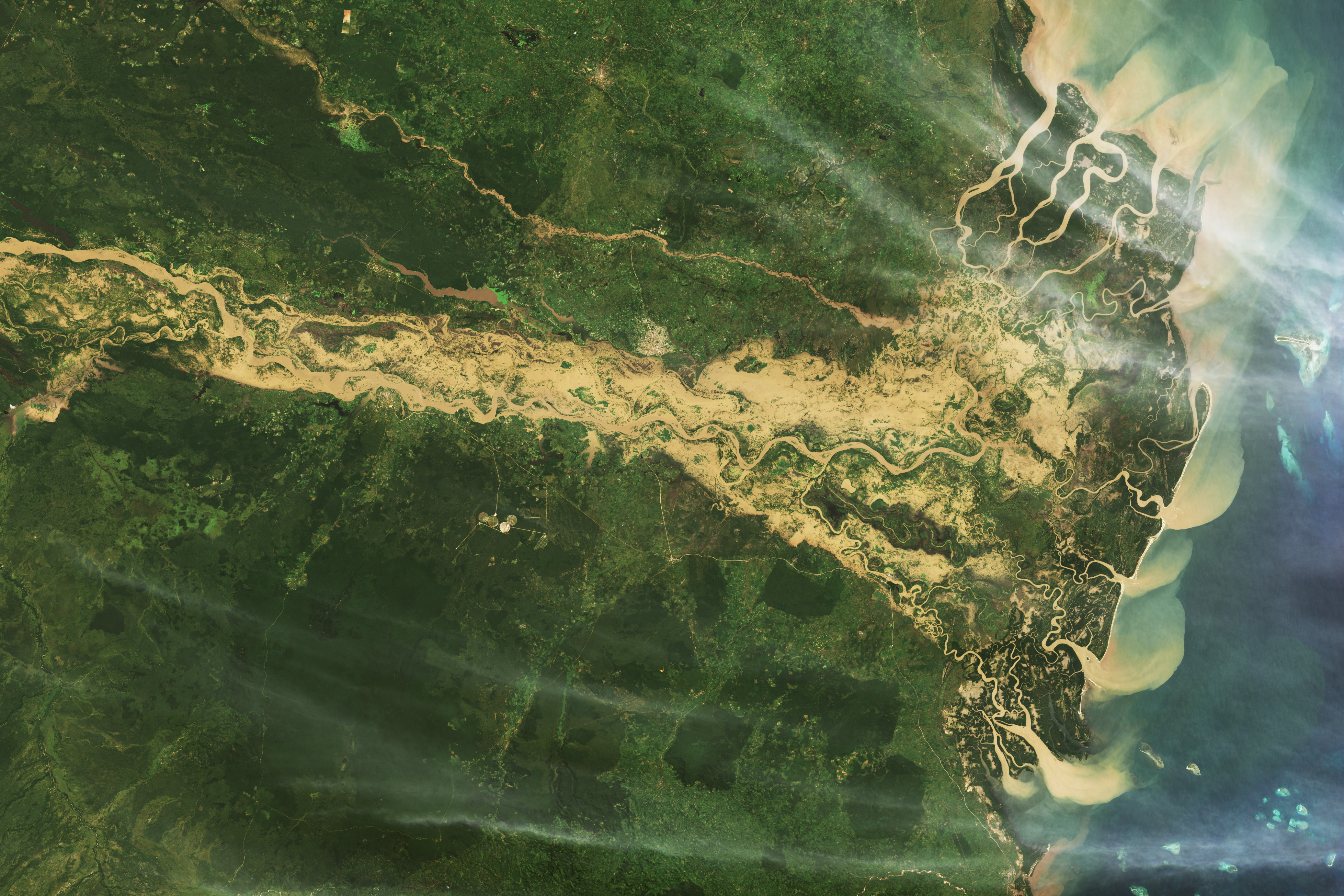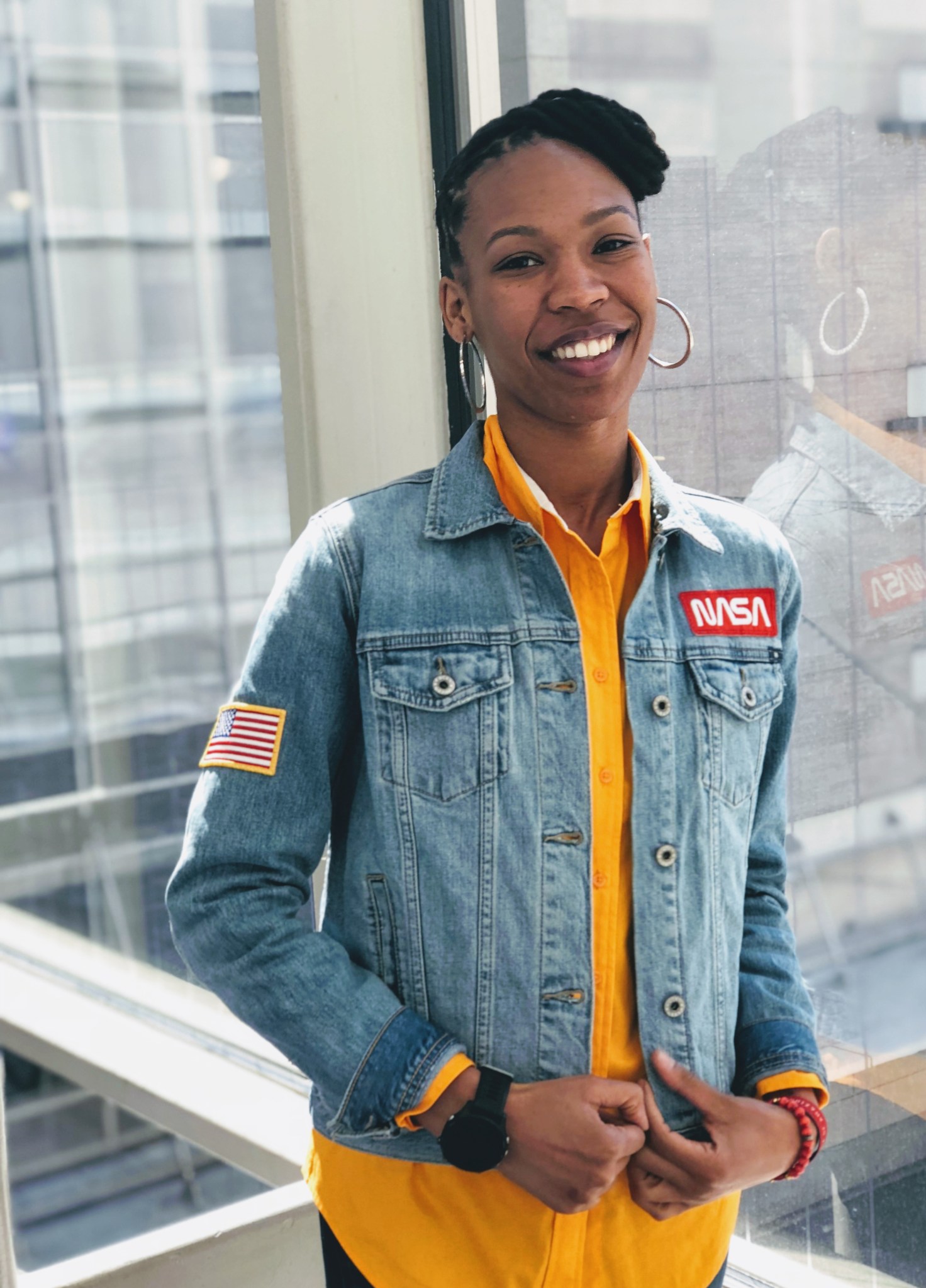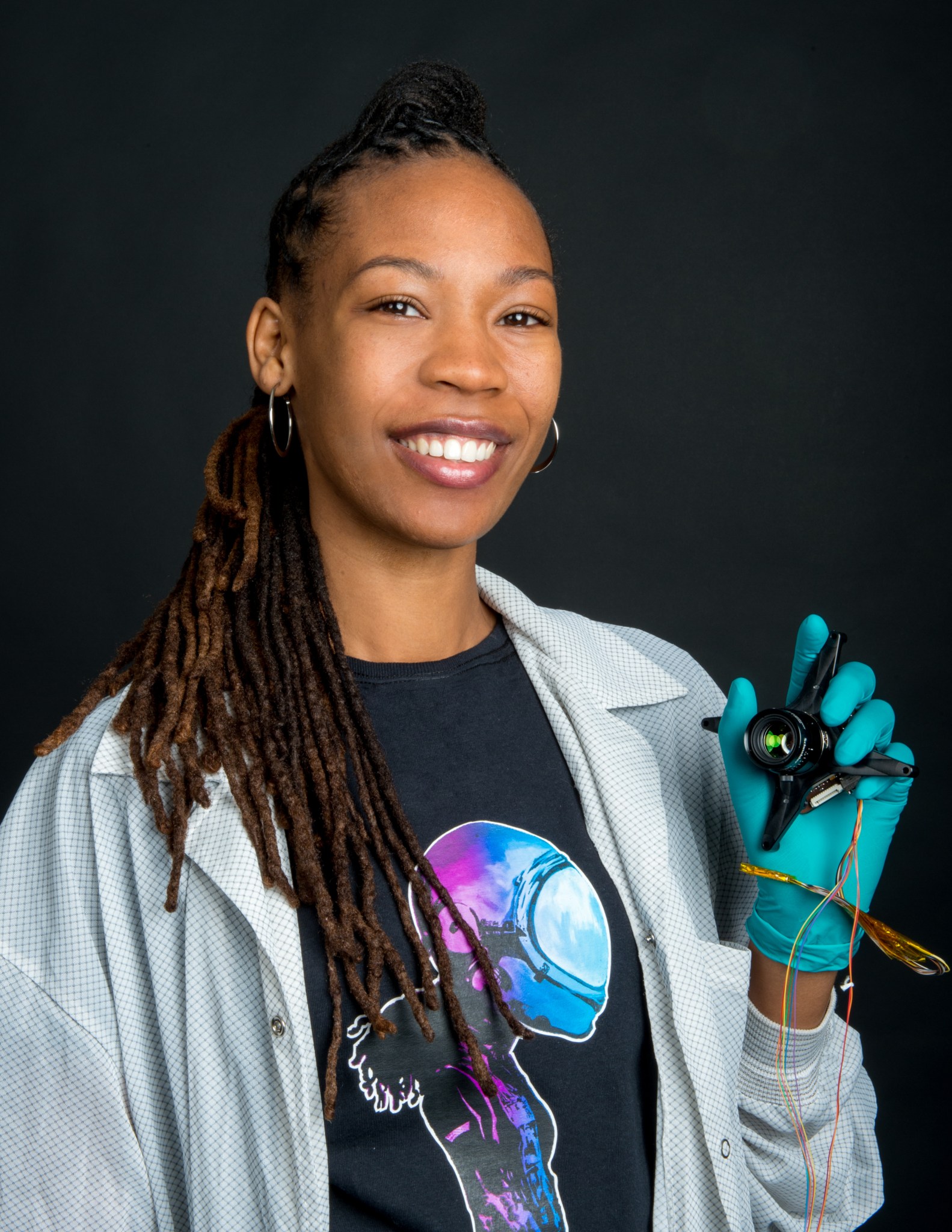Name: Sabrina N. Thompson
Title: Flight Dynamics Lead Analyst
Formal Job Classification: Aerospace Engineer
Organization: Code 595, Navigation and Mission Design Branch, Engineering Directorate
What do you do and what is most interesting about your role here at Goddard? How do you help support Goddard’s mission?
I am not the conventional flight dynamicist. I have my hands in many different initiatives, some of which spill over to the science side.
These days, my daily tasks are spread out in different areas, from research and development efforts to mission design concept studies. Overall, my work involves designing and developing orbits and trajectories for future/upcoming missions.
Who inspired you to become an engineer?
As a kid, I had aspirations of becoming a famous artist or basketball player in the WNBA. I was the valedictorian of my high school and had no clue about what I wanted to study in college. It was my high school art teacher who suggested, since I was good in math and science, that I should consider pursuing a degree in engineering.
I took her advice and ended up at SUNY Stony Brook, where I received a Bachelor of Engineering in Mechanical Engineering. I then went on to receive a Master of Science in Aerospace Engineering from the Georgia Institute of Technology. Currently, I am pursing a Ph.D. in Atmospheric Physics at the University of Maryland, Baltimore County (UMBC).
How did you come to Goddard?
After I received my master’s degree, I applied for a job at Goddard through www.USAjobs.gov. I was hired as a safety engineer in the Occupational Safety and Health Division. After almost just about two years or so, I joined the Navigation and Mission Design Branch as an aerospace engineer.
What do you do as a flight dynamics engineer?
I design and develop orbits. I work on many different missions, and I work in many different ways, much of it simulated. It is an iterative process. I work closely with the scientists to turn their mission requirements into workable engineering solutions.
Which Earth science initiatives do you also work on?
I performed navigation studies for the upcoming Plankton, Aerosol, Cloud, ocean Ecosystem (PACE) mission. I have also worked on numerous other mission concept studies spanning different sciences, including heliophysics, Earth science and planetary science.
Currently, I am working as part of the Aerosol, Cloud, Convection and Precipitation (ACCP) study team, a proposed mission in its conceptual stage. I work on the engineering side as a flight dynamist developing and designing the orbit. I also work on the science side on a study tying the orbit to the polarimeter instrument and the way the science data will be retrieved.
How are you not conventional?
I do not know any flight dynamists who have journeyed back to academia to pursue a Ph.D. in Atmospheric Physics in order to perform scientific studies while still performing their day-to-day job duties. It is somewhat insane, to be honest… LOL. However, it is something I wanted to do. I found a “new love” for Earth. This “new love” has peaked my interested in the science behind the mission design studies I partake in. For instance, I want to gain some of the knowledge scientists use to develop the science requirements I ultimately design the orbits to.
In addition, I develop technology. I have a patent with a team of amazing engineers. We developed a Miniaturized Astrometric Alignment Sensor for Distributed and Non-Distributed GN&C Systems. I am currently working on developing other technology that can be used for a wide range of future SmallSat Distributed Spacecraft missions.
Tell us about your experience in the NASA First Leadership program.
The NASA Foundations of Influence, Relationships, Success, and Teamwork (NASA FIRST) program is a one-year leadership development program for early-career NASA employees. The program exposed us to the inner-workings of NASA at the agency level. We learned how all the NASA centers work together to fulfill the NASA mission.
What is your involvement with STEM and STEAM?
I go to elementary schools, middle schools, high schools and even colleges to speak to the students on a frequent basis. I tell students my story about how I became an engineer. I tell them that having a technical background as a kid is not required to become an engineer or a scientist. I encourage them to have fun by following their curiosity. Then, when the time comes, if they decide to become an engineer or scientist, they will learn the technical skills that are necessary.
Do you have mentors at Goddard? If so, what is their advice?
Eric Holmes mentored me for years and gave me lots of advice and guidance. He helped me find my voice, as I was a very shy person and suffered from something many women may have experienced, “imposter syndrome.” Eric gave me the safe space, as well as practical tools and resources to help enhance my communication skills and build self-confidence. He helped me see that I belonged here at Goddard.
Dr. April Ericsson helped guide my career path in the very beginning. I learned about Dr. Ericsson when I was in graduate school. I was so inspired by her. It took me four months to land a meeting with her. I remember that ‘til this day… LOL. But it was worth the wait. I am forever grateful to her.
Krystal Kennedy mentored me while I was in the Occupational Health and Safety Division. What can I say about Krystal? She’s like my big sis’. She took me “under her wing” and helped me in many facets of life.
Piers Sellers peaked my interest in Earth science with his passion for science and steered me in that direction. He was my mentor in the NASA FIRST program. Lisa Callahan-Wood also helped me become more involved in Earth science. Between the two of them, they put me on the trajectory to engage in aerosol and climate-related research.
Cynthia Simmons is my current mentor. She is helping me find my way as I plan what my future at NASA will look like. She has accomplished so much both in- and outside of NASA. She has also served many leadership roles. Her perspective is diverse and expansive.
Are you a mentor? If so, what advice do you give young people?
I am always mentoring, whether it is an intern at Goddard and or student in middle school. Through these mentor experiences, I am reminded of all the mentors who have helped me get to where I am now, as well as those who are helping me get to where I’d like to be in the future.
What outreach do you do for NASA?
During the month of February, in celebration of Black History Month and Engineering Week, I go into schools and colleges to talk with students. Usually, I tell them the story about how I ended up working at NASA, as well as encourage them to work hard in school. I have also been attending many collegiate events and conferences in an effort to recruit on behalf of NASA. I have volunteered for numerous panel discussions, science fairs and other initiatives that expose and engage youth in STEM activities.
During my first years at Goddard, I was elected to be the vice president, as well as the outreach chairperson, of the National Society of Black Engineers (NSBE), Greenbelt Space Chapter. Through these efforts, I volunteered a lot of time at Goddard cultivating a space where established Black engineers could provide continued professional development, mentoring and support to younger Black engineers.
Is there something surprising about your hobbies outside of work that people do not generally know?
Outside of NASA, I started a program in which I teach children STEM concepts through art projects. I also wrote a book series for children to encourage girls to go after their dreams, be it in STEM or not. Everything I do ties STEM and art together. I make art related to girls in space. Most of my artwork comprises of girls dressed as astronauts. My goal is to take it to the next level. I would like my series to become an animated movie in the near future. I want to shift the narrative when a kid thinks about what it means (and looks like) to be a STEM professional. I am doing this through the arts. I believe it is important to have both STEM and art. Ultimately, I hope to inspire youth to become creative problem solvers who blur the lines of STEM and art as they solve the problems of tomorrow.
Also, physical fitness is very important to me. I am a runner and have been in a few half-marathons and one marathon, even a triathlon. Moving is very important in maintaining physical and mental health. I always have a lot of ideas in my head and physical exercise helps me sort them out.
Do you have a STEM or STEAM hero?
My STEM hero is the late astronaut/climatologist, Dr. Piers Sellers. I remember the first time I met him. It was during the LDEM A program. I found out he was a former astronaut. He was the first astronaut I ever met in person. I had aspirations of becoming an astronaut. So right away, I was glued to the presentation he gave during the leadership development program. From there, I kept in touch and shadowed him a few times. He connected me with his other astronaut friends and mentored me in another NASA leadership development program years later. I must say, I have never met someone so passionate, driven, diligent and optimistic about not only his work, but also, about life in general. In his last days, I watched this man come to work and give his all to help push initiatives that would help us better understand climate change. He did it with joy and a level of playfulness that was infectious. It was Piers who started me on the path to study atmospheric physics, so I could be more involved in climate-related research endeavors.
What is your “six-word memoir?” A six-word memoir describes something in just six words.
Creative. Innovative. Driven. Playful. Passionate. Go-getter.
By Elizabeth M. Jarrell
NASA’s Goddard Space Flight Center






























